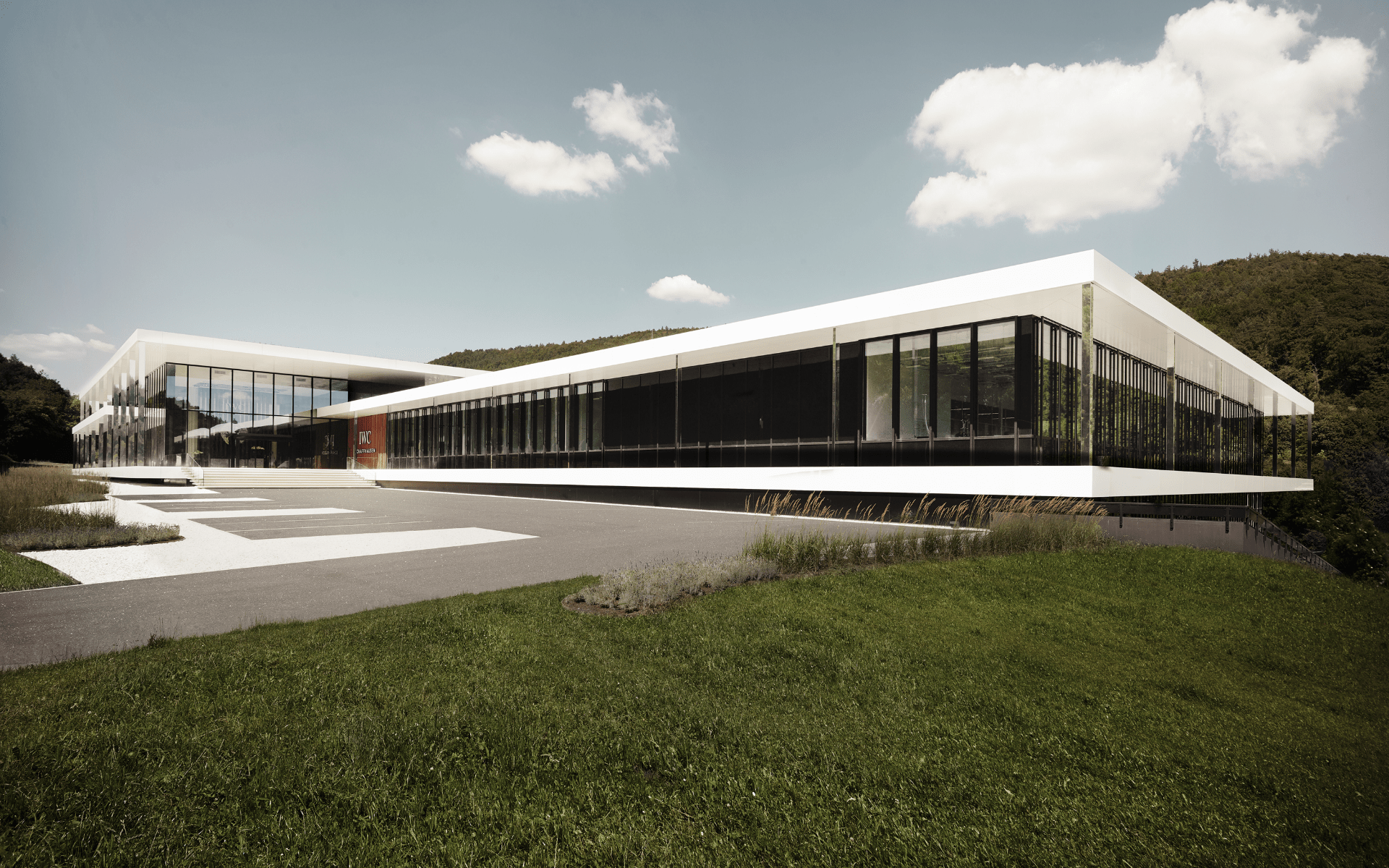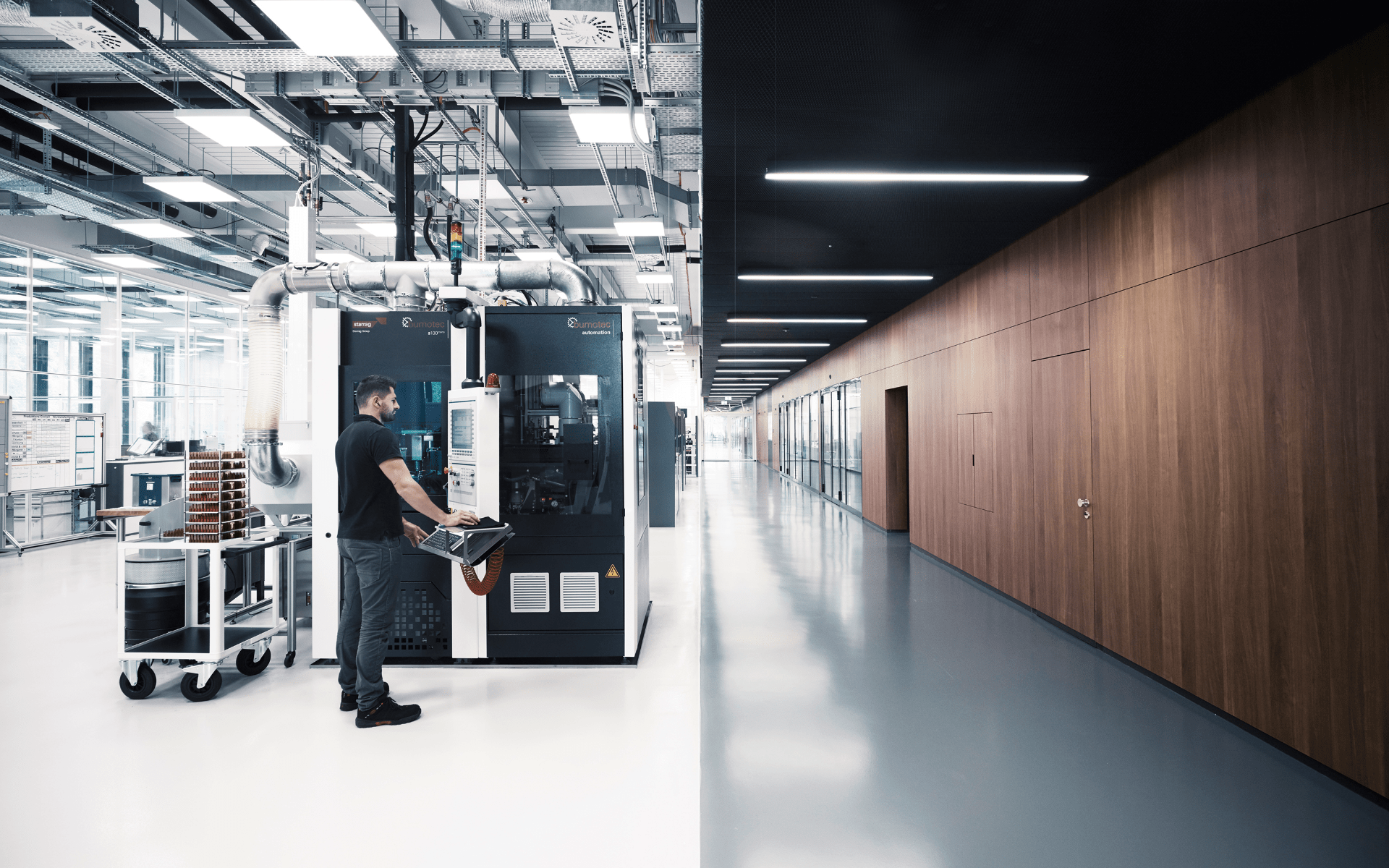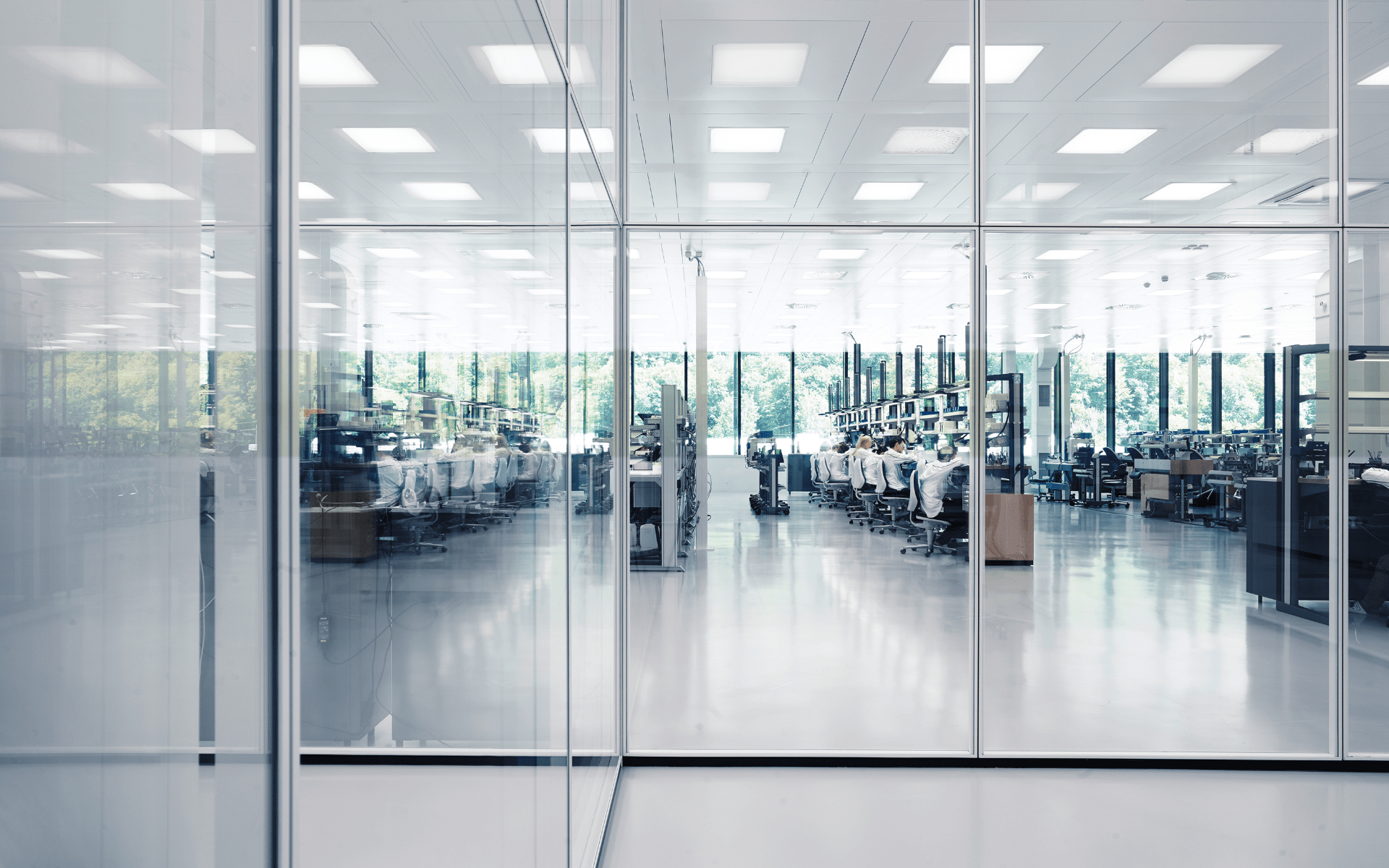Please elaborate how this facility is an improvement from the past.
Previously, our manufacturing activities were divided between several floors and several locations. For the first time in our history, we bring together the production of movement components, movements and cases in one place. This step has ensured that our production processes run optimally and produce perfect quality.
Another aspect would be the proximity of our offices (in central Schaffhausen) to this production facility (in Merishausen, about 13 minutes’ drive away). This makes communication between the teams and departments much easier and quicker, and we can continuously improve our processes.
Why is it so important for these production processes to be housed together? What about the final assembly?
There are many operational advantages. For example, the entire process of creating value, from the raw material to the individual component and the finished manufacture movement, now progresses in a logical order on a single floor. To foster effective teamwork, we also set up shop floor areas, where our teams can discuss objectives, quality requirements and other issues.
An important innovation is also the line concept we developed for our movement assembly. Since the assembly process is broken into several sub-processes, we can assign a specialist with specific expertise to each step, thus maximising quality standards.
When you enter the Manufakturzentrum building you immediately get a sense of the pride that our employees take in their work. If production is divided up over multiple floors or buildings, you don’t get that sense.
The final assembly of our watches, the final quality check and the assembly of high complications, however, remain at the old location in Schaffhausen.
Also see: IWC’s first Portugieser Perpetual Calendar In platinum case




